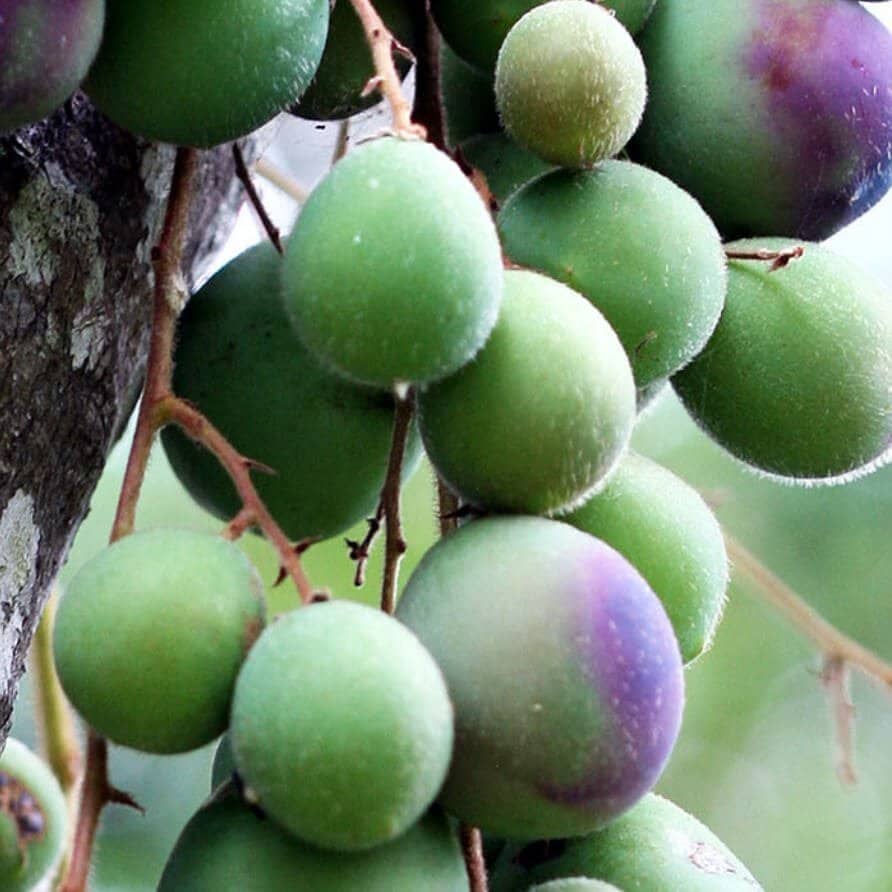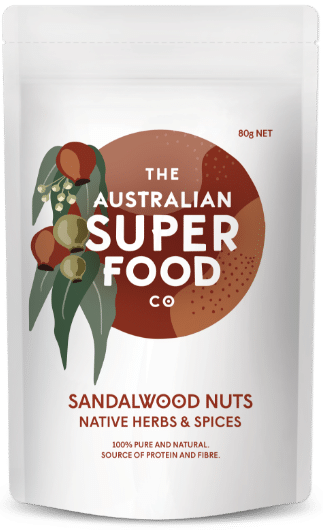Grown in the desert and arid regions of Australia, Sandalwood trees (also known as Santalum spicatum) can be found in the woodlands and shrublands of southern Western Australia and South Australia.
Small, fragrant flowers appear from February to March, followed by fruits throughout the cooler season. In early to mid-winter, harvest directly off the branch or collect from around the base of the tree.
Used for centuries by Indigenous Australians, sandalwood nuts were consumed as a cure for rheumatoid arthritis, while the oils inside the nuts were applied topically to skin to aid with inflammatory conditions and body aches.
Sandalwood nuts were also used to soften hair, skin and scalp, and prevent the signs of aging, moisturise facial skin, and protect the skin from the drying desert environment. They were crushed and made into poultices, then placed onto the face as a mask. These masks made the skin smoother, softer and more taut.
Download The Australian Superfood Co provenance map here.
- Sandalwood nuts are an excellent source of protein, with nearly twice the amount of protein as the macadamia, and dietary fibre, with nearly three times the amount of fibre as the macadamia.
- Sandalwood nuts have minimal carbohydrates (less than 1%).
- Sandalwood nuts are high in antioxidants and monounsaturated omega 9 fatty acids, including Oleic acid (52±2%) and Ximenynic acid (35±2%) which can help with weight loss and may reduce risk factors for heart disease, cancer and inflammation.
- Sandalwood nuts arerich in oils containing ximenynic acid, one of the rarest fatty acids found in the world and hailed as a powerful anti-inflammatory and anti-aging superpower.
- Sandalwood nuts contain a low concentration of saturated fatty acids.
- For centuries, sandalwood nuts were consumed orally by Indigenous Australians as a cure for rheumatoid arthritis and topically applied (rubbed) for cold and stiffness.
- They were also used to soften the hair, skin and scalp and prevent the signs of aging, to moisturise facial skin, and protect the skin from the drying desert environment.
- Sandalwood nuts were crushed and made into poultices, then placed onto the face as a mask. These masks made the skin smoother, softer and more taut.
Flavour:
A unique and delicate creamy flavour and texture, with earthy, woody undertones, and sandalwood notes.
Palate:
Crunchy and creamy texture with wood like notes on the front palate and subtle sandalwood notes on the back palate.
Aroma:
Earthy, nutty like aroma, similar to an almond or hazelnut, with soft, smoky notes.
Sandalwood nuts are rather neutral, yet their creamy, nutty and earthy taste makes them ideal for use in many savoury and sweet dishes.
Add toasted sandalwood nuts to dukkah, or use with other nuts in a home-made granola or muesli, and mixed spiced nut recipes. Use in bliss balls and smoothies, or as a topping for apple crumble, pie or cheesecake crust and other desserts. Try using it in chocolate recipes, such as chocolate truffles.
Crushed sandalwood nuts make a perfect topping for potato and cauliflower au gratin, paired with mild grated cheese, or try shaving it over pasta or seasoned vegetables. Use shaved Sandalwood nuts as a crumb and coating alternative for fish and chicken schnitzel. The nuts add a crunch to salads and a beautiful creamy texture for traditional or kale pesto.
Combine the nuts with fresh herbs to create a delicious stuffing for poultry, or use as the base for vegan nut cheese.
Click here for delicious Sandalwood Nut recipes.










